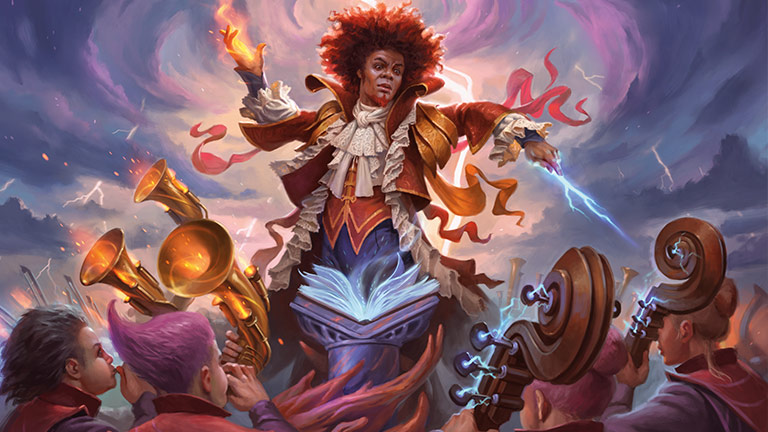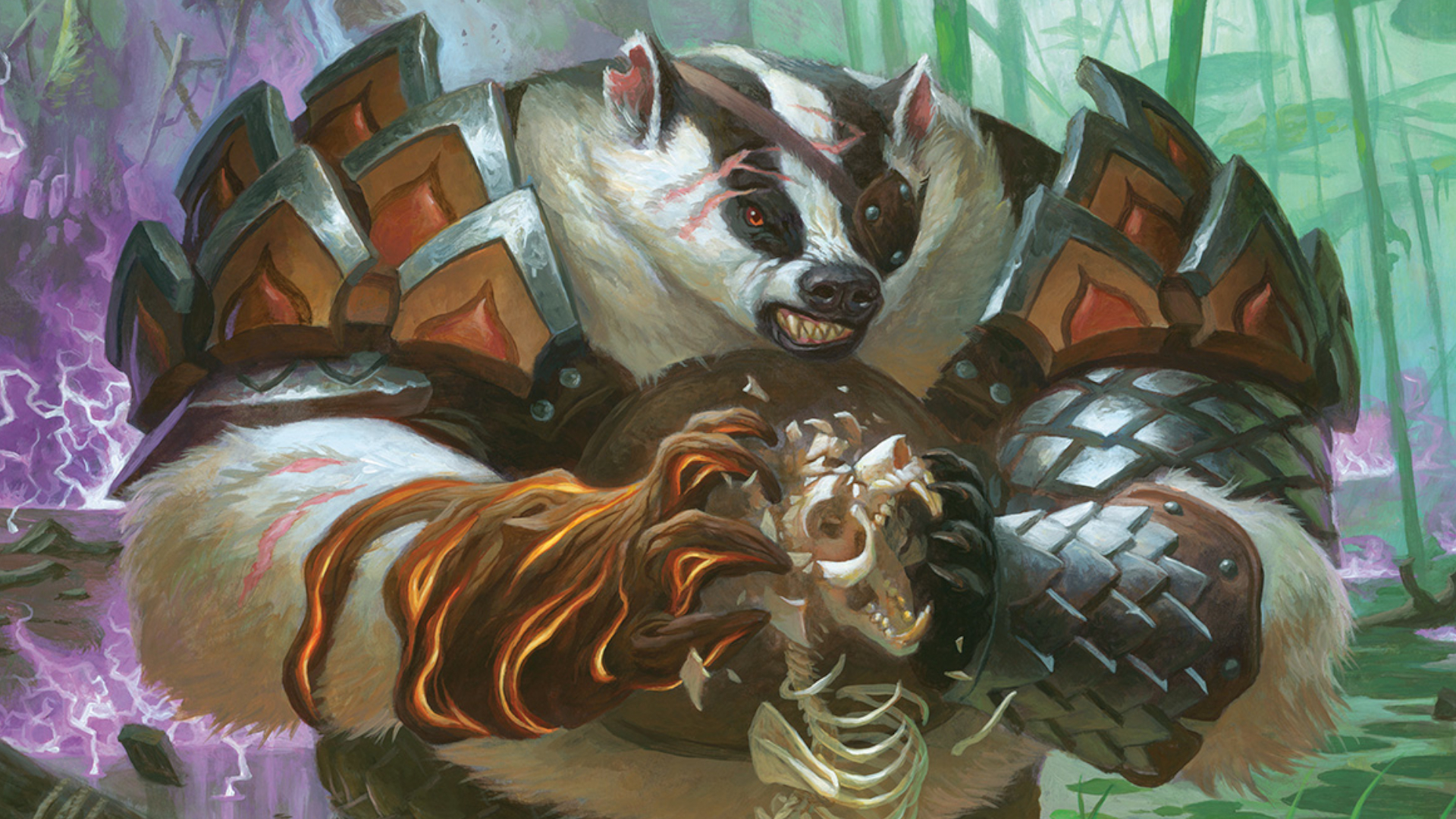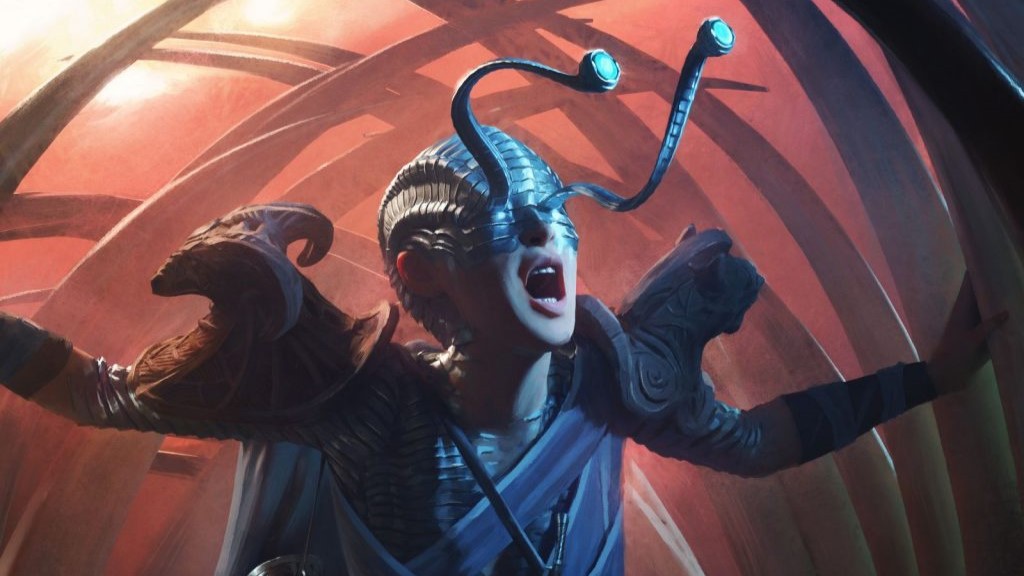
Learning how to play MTG Commander feels like an obvious next step for a newbie Magic player.
After all, Commander is the most popular casual format of Magic: The Gathering. With MTG being considered in the upper echelons of the best card games and Commander being such a popular format, you'd be hard-pressed to go to your local games store and not come across a group ready to invite you to a Commander game.
If you're keen to join the fun but don't know where to start, you're in luck. Below you'll find a crash course in Commander that gives you everything you need to get started with the format.
What is Magic: The Gathering Commander?

You'll want to make sure you're up to speed with how to play Magic: The Gathering, first. But thankfully, Commander isn't too difficult to understand from a pure rules standpoint - in fact, there are only three main factors that distinguish it.
The first of these is that Commander is most often played with three or more players. That said, the Duel Commander (1v1) variant isn't uncommon. In a multiplayer Commander game, each player starts the game with a life total of 40 as opposed to 20.
Another difference is that a deck used to play Commander will have 100 cards where no non-land cards repeat.
The most crucial element of your deck when playing Magic: The Gathering is your Commander. Your Commander is a legendary creature who instead of being drawn from your library, begins the game in an area of the battlefield called the Command Zone. Your Commander can be cast from the Command Zone at any point, provided you have sufficient mana to do so.
If your Commander is destroyed or exiled, you may choose instead to return it to the Command Zone. Each time this happens, you incur a Commander Tax of 2 generic mana. For example, if your Commander cost 4 mana to cast initially, the cost would go up to 6 mana the first time it returns to the Command Zone, 8 mana the second time, and so on.
You can win a game of Commander by reducing all your opponents' life totals to zero. Alternatively, if a player has 21 combat damage dealt to them by an individual Commander, they are defeated. The combat part of combat damage is an important distinction — damage that your Commander does to your opponent using their abilities doesn't count toward Commander damage. So, if you're taking this approach to secure your win, you'll want a high-power Commander.
How to choose the best Commander

To play MTG Commander, you'll need to have a Commander in your 100-card deck. Your Commander can be any card that is a legendary creature or non-legendary card that specifies it can be used as your Commander. If your creature card is legendary, it will say so to the left of where it details their creature type.
In some rare cases, you can have two creatures as your Commander provided you have cards with the Partner ability. However, this isn’t the only keyword that allows for two Commanders. There have been a couple of re-flavorings of this ability over the years, one example being the Doctor Companion keyword from the Magic: The Gathering Doctor Who set.
The strength of your Commander can be measured in several ways. Some Commanders offer raw power and have features like Deathtouch or Indestructible, so they can be relied upon to cut down creatures and damage opponents. However, most play a more strategic role and assist you with things like buffing creatures or creating Tokens.
How to build a Commander deck

The two main methods you can choose to construct a Commander deck. The first is a Commander-forward approach. This way, you first decide which card will front your deck. This could be based on their value, a particularly interesting mechanic or hey, you could just really like the art. It's up to you. Once you've made your decision, you can then go about choosing cards that can work to support the Commander's mechanics.
The second place you can start from is with your overarching strategy or theme. Then you can go on to choose a Commander that suits that. For example, you could decide you want to build a Zombie tribal deck and collect some of your favorite Zombie cards that work well together. With that theme in place, you could benefit from choosing a Zombie-focused Commander like The Scarab God, who lets you reduce your opponent's life total and scry for each Zombie you control.
Either way, it's best to have synergy between your Commander and the other 99 cards in your deck. This way you can maximize the efficacy of both and create some killer combos.
If that all sounds a bit too complicated, you can just purchase a pre-constructed Commander deck and tweak it to your liking. Pre-cons already have an established mechanical focus, so it's easy to swap out a couple of cards and create an upgraded, customized deck.
Each Magic: The Gathering set has its own set of new pre-constructed Commander decks, so it's worth checking out everything you need to know about Outlaws of Thunder Junction for the latest pre-cons to be released.
Magic: The Gathering Commander FAQs
Can I have a Planeswalker as my MTG Commander?
Not usually. Planeswalkers don't fit the requirement of being a legendary creature. However, some Planeswalkers can be used as Commanders if this is explicitly stated on their card.
How many lands should I have in an MTG Commander deck?
Having around 36 land cards is standard for a Commander deck. However, this will vary from deck to deck. You'll want to figure out the mana curve of your deck is; that is to say how many cards of each mana value your deck has. This will help you decide how many land cards you need to put your plans in motion.
Do I need a MTG Commander deck box?
Yes. If you have standard Magic: The Gathering deck boxes already, they likely only have a 60-card capacity. To safe store your MTG Commander deck, you'll want to get a deck box designed to hold 100 cards. Most manufacturers will specify how many cards their deck boxes hold.
When comparing the size of deck boxes relative your deck, make sure to factor in the added bulk of card sleeves. A sleeved deck will take up almost double the amount of space that an unsleeved deck will. If you're opting of the extra protection of double or triple sleeving, be sure to consider that too.
As you're getting more in Magic: The Gathering, you'll want to familiarize yourself with the MTG banlist.
Looking for more tabletop fun? Give some of the best board games a go. Or if character sheets and d20s are more your thing, check out the best tabletop RPGs.







